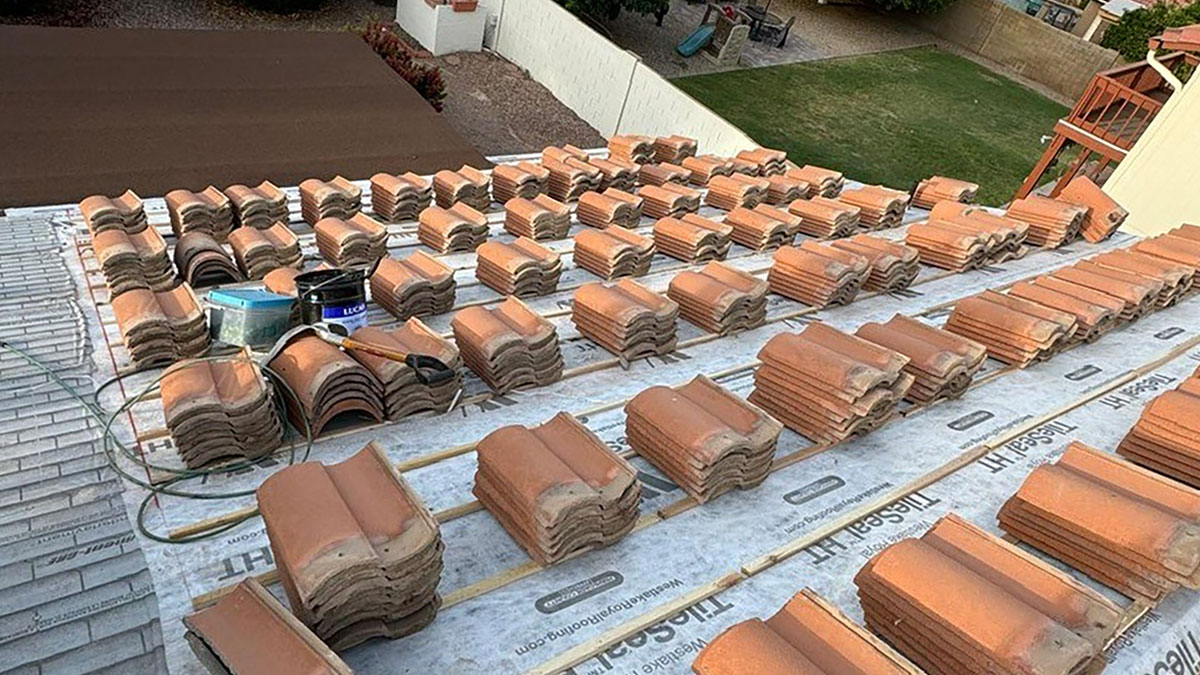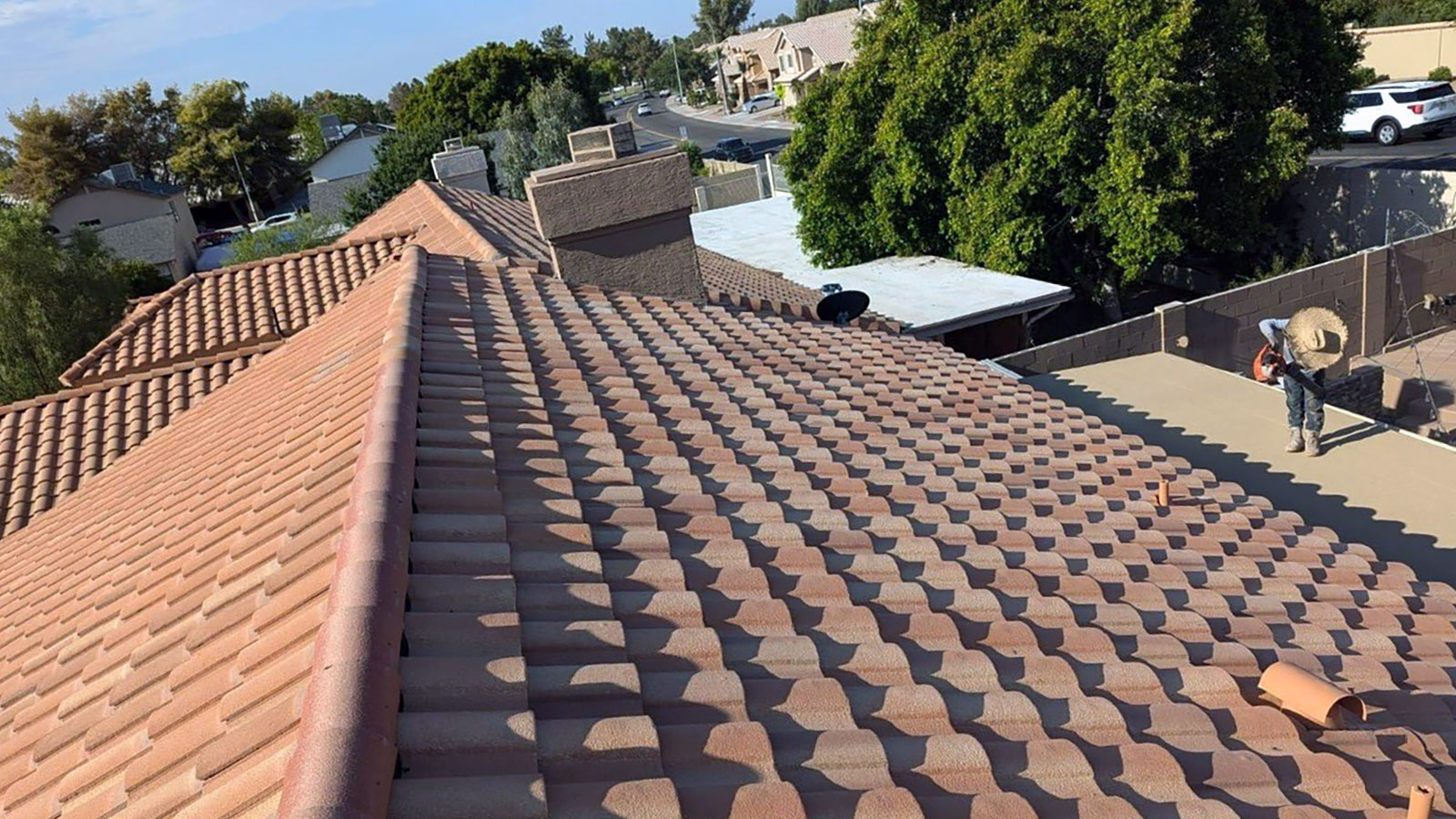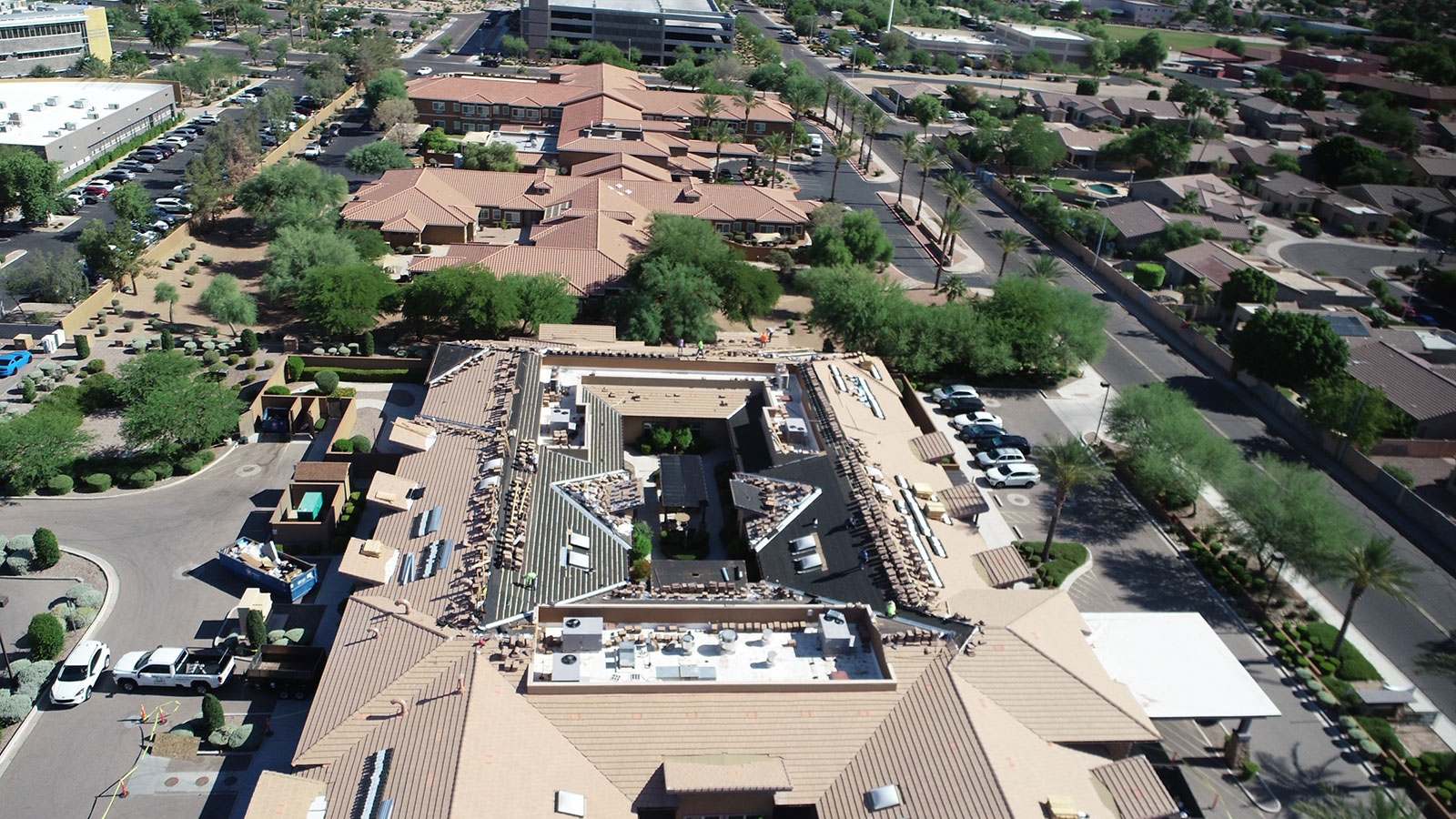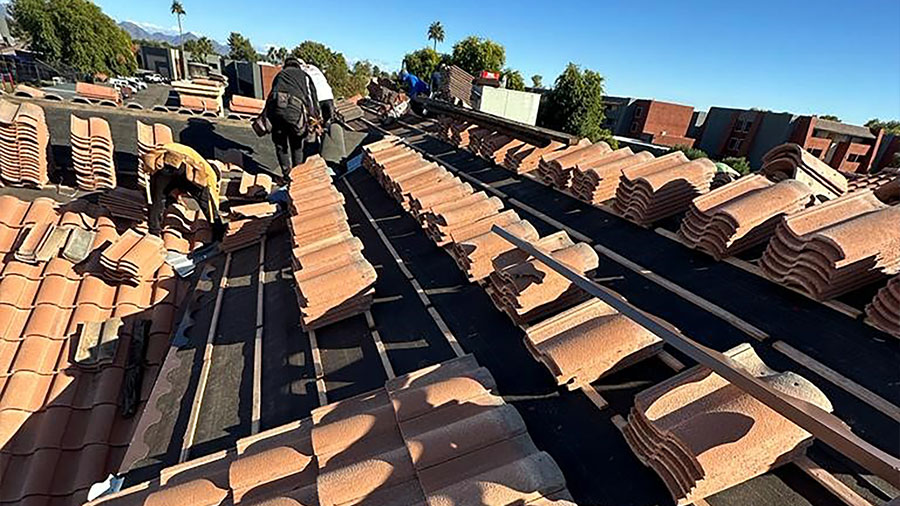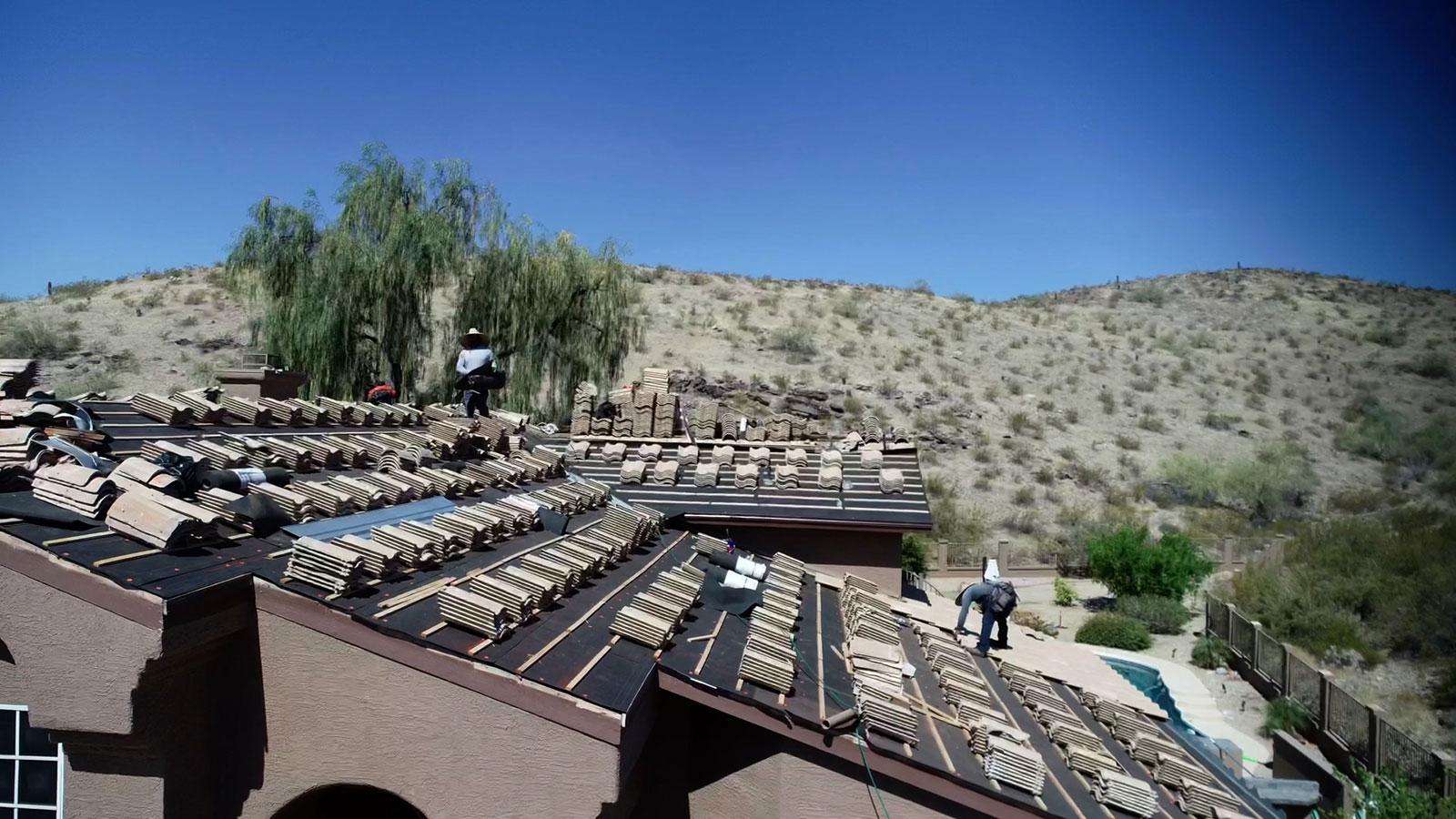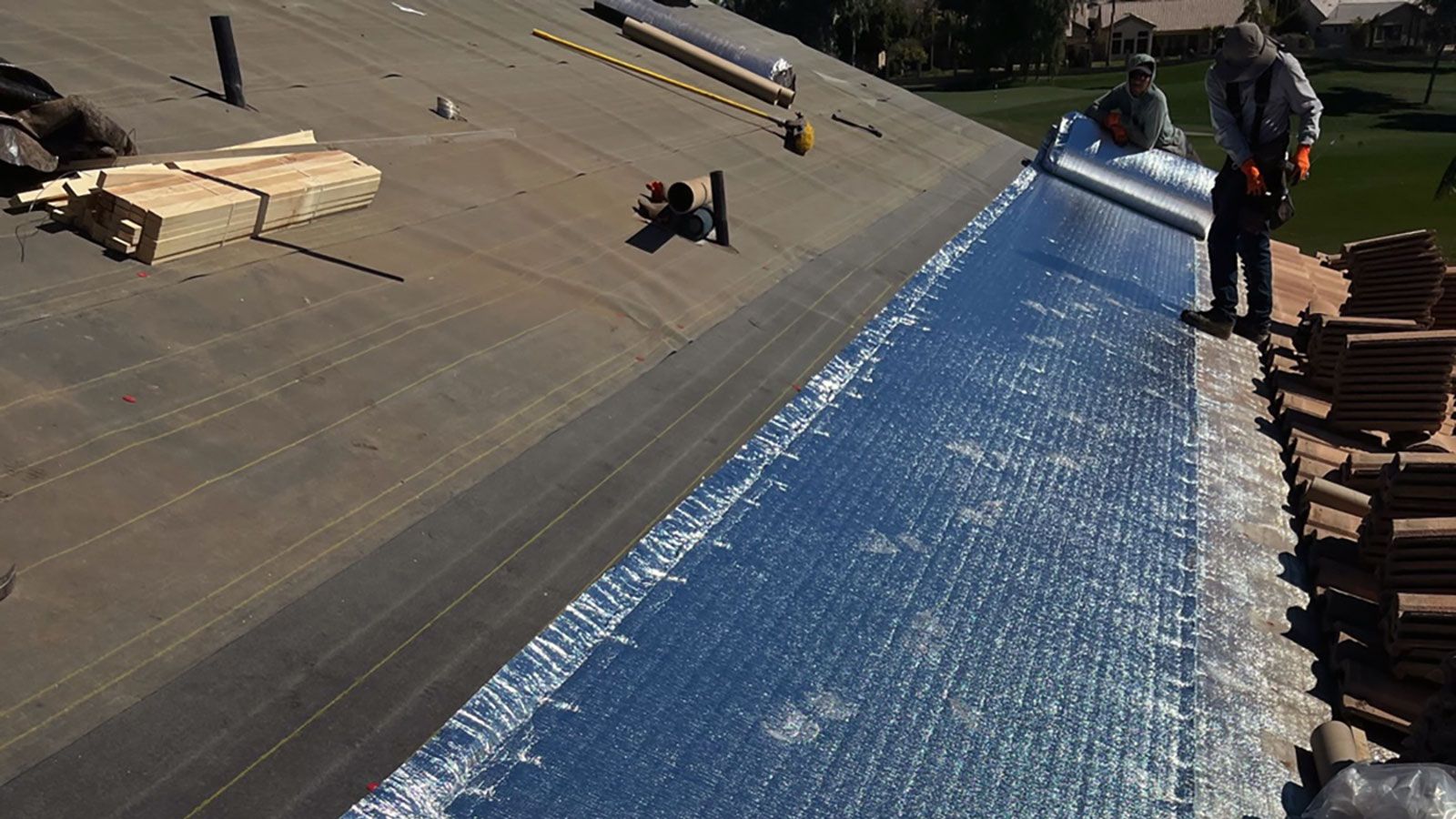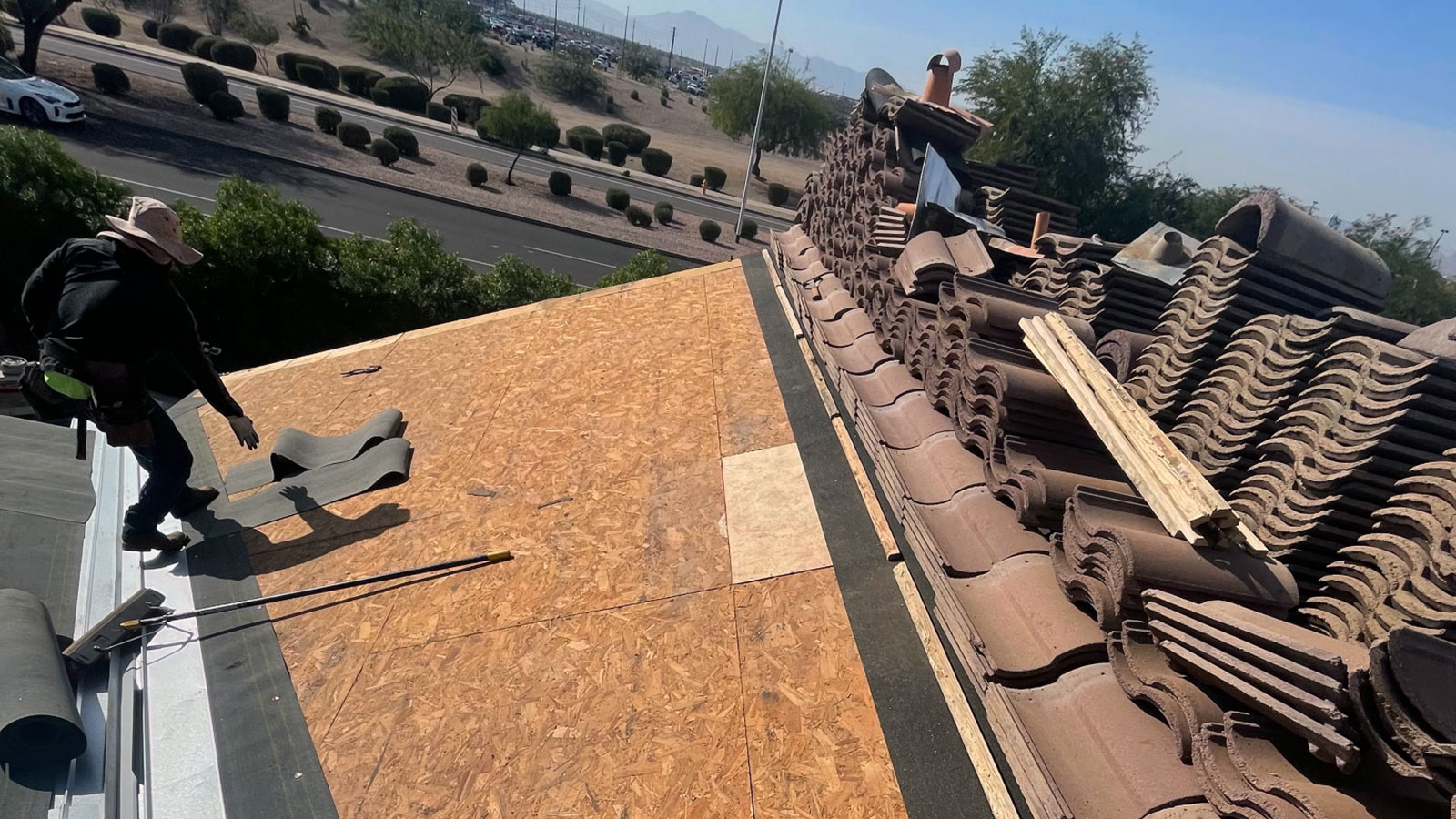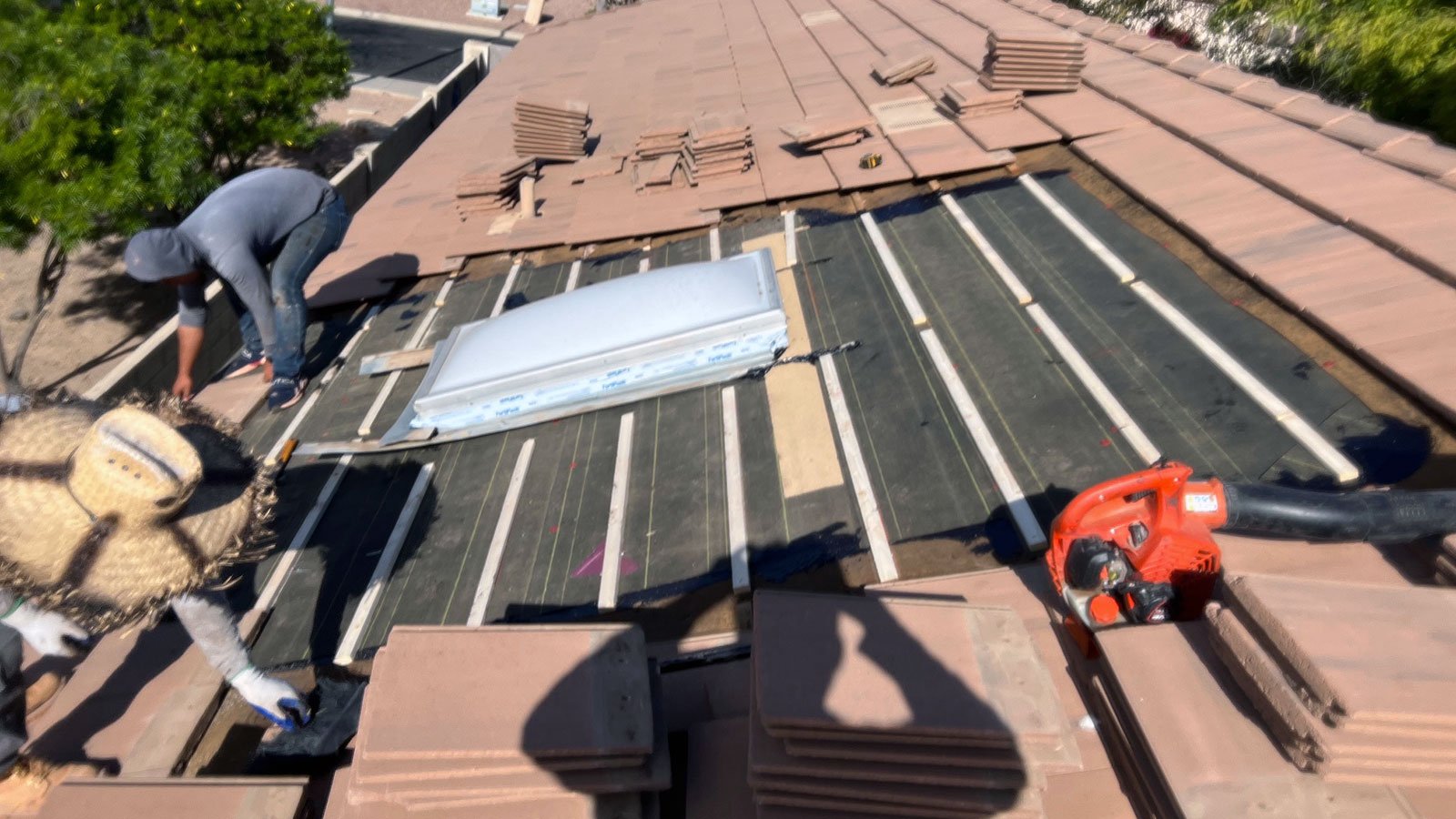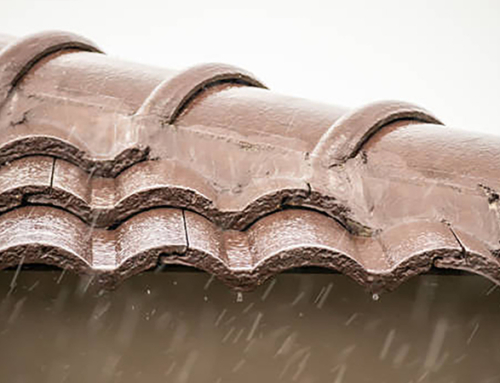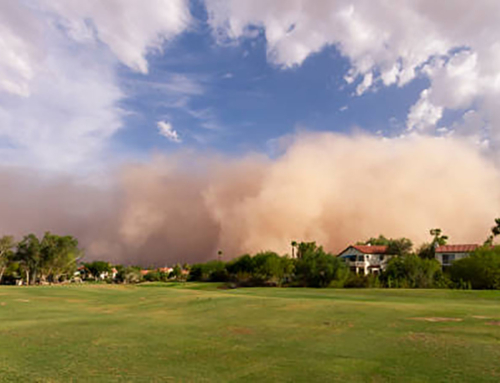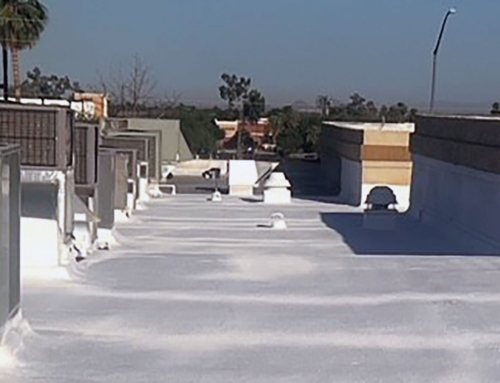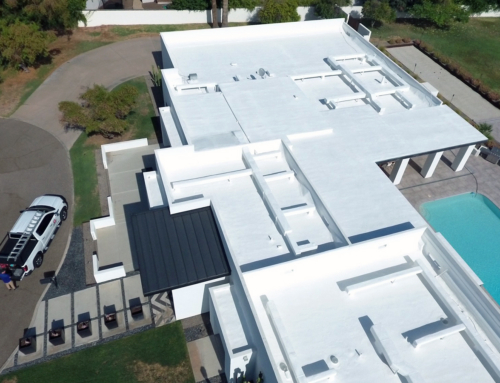In Arizona, tile roofing is one of the most durable and long-lasting systems you can install—but only if the underlayment beneath the tiles is still in good condition. Most tile roofs in Chandler, Scottsdale, and the Phoenix metro area begin to leak not because the tiles are damaged, but because the underlayment has reached the end of its lifespan.
This guide explains why underlayment fails, how long it lasts in Arizona’s extreme climate, what to do if your tile roof leaks after a storm, and how to know whether you need a full replacement—or a targeted repair.
Why Tile Roofs Leak After Monsoon Rain in Arizona
Tile roofs are designed to shed water, not seal out moisture. The real waterproofing layer is the underlayment underneath the tiles. During monsoon storms, heavy wind-blown rain can penetrate areas where the underlayment has deteriorated, allowing water to enter your attic or living spaces.
According to the National Roofing Contractors Association (NRCA), underlayment is the primary barrier protecting your home from water intrusion—not the tiles themselves.
Common Reasons Tile Roofs Leak During Arizona Storms
- Underlayment exceeds its service life (common after 17–20 years)
- UV exposure dries and cracks the material
- High winds lift or shift tiles, exposing weak points
- Flashing deterioration around skylights, vents, valleys, and chimneys
- Ponding or debris buildup blocking water flow
How Long Does Tile Roof Underlayment Last in Arizona?
While tile itself can last 40–50+ years, the underlayment beneath typically lasts 15–25 years in Arizona’s climate. Extreme heat, UV exposure, and monsoon cycles dramatically accelerate aging.
The Insurance Institute for Business & Home Safety (IBHS) notes that high-heat regions experience significantly faster roofing underlayment breakdown compared to mild climates.
Realistic Lifespan by Underlayment Type
- 30-lb felt: 12–18 years
- 40-lb felt: 15–22 years
- Synthetic underlayment: 18–30 years (depending on brand)
- Newer high-performance underlayments: Up to 30+ years
Early Warning Signs Your Underlayment Is Failing
Inside the Home
- Water stains on ceilings (especially after storms)
- Musty odors in attic or living spaces
- Visible drips during heavy rain
On the Roof
- Cracked, curling, or exposed underlayment visible beneath tiles
- Tiles sliding out of place or broken
- Patches of granule loss or brittle material
During a Professional Inspection
An experienced roofer will look for:
- Underlayment dry rot
- Gaps or tearing in the membrane
- Improper tile fastening
- Flashing deterioration
You can schedule an inspection directly from MSW’s Chandler or Scottsdale location pages.
Do You Need to Replace the Underlayment or the Whole Roof?
One of the most common questions Arizona homeowners ask is whether they need a full roof replacement or just underlayment replacement. In most cases, if your tiles are in good condition, replacing only the underlayment is the correct—and most cost-effective—solution.
Underlayment Replacement Is Usually Enough When:
- The tiles are still intact and reusable
- Leaks are limited to specific underlayment failures
- Roof structure is sound
A Full Tile Roof Replacement May Be Needed When:
- Tiles are severely damaged or discontinued
- Structural issues are discovered during tear-off
- The roof has exceeded 40+ years
FEMA also emphasizes that water intrusion should be addressed quickly to prevent mold and structural deterioration (FEMA Homeowner Guidelines).
What To Do If Your Tile Roof Leaks After a Storm
If your roof begins leaking during monsoon season, follow these steps to protect your home while awaiting repairs:
- Move valuables away from the affected area.
- Contain active drips with buckets or towels.
- Photograph the affected area for insurance.
- Do not walk on the tile roof—this can worsen damage.
- Contact a licensed roofing contractor immediately.
The National Weather Service advises extra caution around wet, slick roof surfaces during storms.
MSW Contracting services all of Chandler, Scottsdale, Mesa, Gilbert, Tempe, and the greater Phoenix area.
Why Underlayment Fails Faster in Chandler & Scottsdale
The East Valley experiences some of the most severe heat and UV conditions in the state. Combined with older tile roofs built in the 1990s and early 2000s, many homes in Chandler and Scottsdale are now at or beyond their underlayment’s life expectancy.
- Chandler: Large neighborhoods built 1995–2008 now hitting 17–25 years of service life.
- Scottsdale: Many homes use heavier tile that hides underlayment deterioration until major leaks appear.
- Mesa / Gilbert / Tempe: High sun exposure accelerates underlayment brittleness.
This makes a dedicated underlayment replacement guide essential for homeowners across the region.
Schedule a Tile Roof Underlayment Inspection
Whether you’re in Chandler, Scottsdale, Mesa, Gilbert, or Tempe, MSW Contracting can inspect, repair, or replace the underlayment on your tile roof.
Contact MSW Contracting today to schedule your roof inspection.
Recent Tile Roofing Projects:
Tile Roof FAQs:
Schedule a Tile Roof Underlayment Inspection
If you’re in Chandler, Scottsdale, Mesa, Gilbert, Tempe, or anywhere in the greater Phoenix metro area, MSW Contracting can inspect, repair, and replace the underlayment on your tile roof.
If you’re considering a tile roof underlayment replacement or need expert advice on a roof leak after a monsoon storm, our team is here to help. MSW Contracting LLC is fully licensed, insured, and bonded — and widely considered one of the best roofing contractors in the Valley. We’ve proudly served Arizona homeowners for decades, repairing and installing all types of residential and commercial roofing systems.
Contact MSW Contracting today for a fast, friendly, and free estimate:
Call: (800) 934-2573
Email: info@roofarizona.com
Your roof protects your home — let our experts ensure it’s ready for Arizona’s heat, monsoon storms, and year-round weather conditions.




